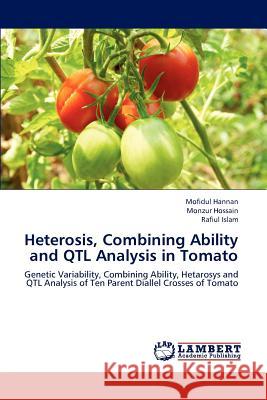Heterosis, Combining Ability and Qtl Analysis in Tomato » książka
Heterosis, Combining Ability and Qtl Analysis in Tomato
ISBN-13: 9783659214417 / Angielski / Miękka / 2012 / 180 str.
Ninety F1 hybrids obtained by diallel cross involving ten tomato genotypes displayed wide range of variation and heterosis for ten characters studied. Heritability was the highest for no. of fruit/cluster, fruits/plant, fruit yield/plant and no. of seeds/fruit. The highest genetic advance and genetic advance expressed as percentage were recorded for the characters no. of fruits/plant and no. of seeds/fruit. The genetic advance, coefficient of variability and heritability indicated that selection of superior parents based on these characters might be effective in hybridization programme to develop high performing tomato hybrids. Combining ability analysis showed that yield and yield component characters were found to be controlled by both additive and non-additive genes. Good combiner genotypes Japany, Epoch, Namdahri, Ratan and Legend possessed mostly dominant genes for all the characters. For QTL analysis F2 population was developed from a cross between two tomato genotypes Dynasagor and Bari-4. Five QTLs were identified with fruit yield/plant. Of five, three QTLs were contributed by the parent Dynasagor and two were contributed by parent Bari-4.











